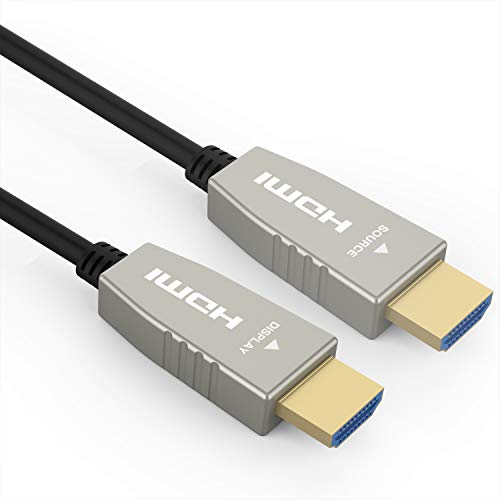
Fiber Optic Transceiver is commonly known as Fiber Optic Transceiver, optical module, Optics Module or simply Fiber Optic Cable. It’s a single, package device that utilizes fiber optic technology to send and receive data at faster speed. In simple words, it’s a communication device used in telecommunication, wireless network, computer networking and other communication applications that are equipped with one or more fiber optics. It consists of many fibers that are twisted together to create optical path. These fibers carry signals in the form of electromagnetic radiation called optical waves.
Fiber Optic Transceiver or also known as Fiber Optic Cable is using to send and receive information from one source to another. It’s an optical apparatus and has various components such as fiber optic transmitter, receivers, and cables. Fiber Optic Transceiver’s main function is to carry data along with the signal. The transmitted and received information is then converted into electrical signal and vice versa. It’s an important invention because it makes the transmission and reception of information easy.
There are different types of Fiber Optic Transceiver based on its functions. One such type is optical modem, which is used for connecting to network via internet and other optical modules such as ATM, network interface cards, pluggable modules etc. It’s an advanced system for high speed data transmission over long distances. Another type of Fiber Optic Transceiver is optical interconnects which connects devices together using copper wires and some additional components such as integrated logic modules, PHY chips etc.
There are many benefits of using this technology such as low cost, high speed, power saving and safety. Many companies like Microsoft, Cisco, Hewlett Packard, Motorola and others have come up with their version of Fiber Optic Transceiver based on its applications. Some of them use the technology in their networking equipment, while others use small form factor pluggable transceivers for local area network and other uses. Microsoft has its Silverlight technology which has the ability to convert analog input voltage signals into electricity signals and this helps in converting voice messages into electric current. Cisco’s voice over ip (VOIP) has an option for small form factor pluggable transceivers, which is useful for small offices.
However, before opting for a Fiber Optic Transceiver it’s very necessary to check different manufacturers’ specifications and model specification. Different models have different numbers of fiber optic transceivers per module. A model with twenty modules may not be the best fit for your office or home application. Therefore it is extremely important to check different models and brands before buying a Fiber Optic Transceiver. Some of the main features to look for are power rating, RF modulation type, SFP+ capability, modularity, thermal range and power interface.
Today more testing facility is coming up for Fiber Optic Transceivers. There are many quality test labs that test, inspects and certify outdoor and indoor fiber optic transceivers and their products. For reliable and impartial guidance there are numerous online organizations which conduct fiber optic tests and inspections. They offer a guarantee for the results and guidance for selecting the right type of Fiber Optic Transceiver for your application.
-
 HIVIZ Extremely Slender Magnetic Fiber Optic Shotgun Sight Inexperienced and Purple, One Measurement$19.12
HIVIZ Extremely Slender Magnetic Fiber Optic Shotgun Sight Inexperienced and Purple, One Measurement$19.12 -
 HIVIZ 3/8-Inch Dovetail Fiber Optic Rifle/Muzzleloader Sight 0.42 PeakProduct on sale$21.15
HIVIZ 3/8-Inch Dovetail Fiber Optic Rifle/Muzzleloader Sight 0.42 PeakProduct on sale$21.15 -
 Sight Fiber-Optic Entrance and Rear Sight for G17, 17L, 19, 22, 23, 24, 26, 27, 33, 34, 35, 38 and 39 (Excluding M.O.S. Fashions)$26.88
Sight Fiber-Optic Entrance and Rear Sight for G17, 17L, 19, 22, 23, 24, 26, 27, 33, 34, 35, 38 and 39 (Excluding M.O.S. Fashions)$26.88 -
 2-Pack Single Mode 9/125um SC/UPC Male to LC/UPC Feminine Hybrid Optical Fiber Adapter Connector for Optical Energy Meter$12.99
2-Pack Single Mode 9/125um SC/UPC Male to LC/UPC Feminine Hybrid Optical Fiber Adapter Connector for Optical Energy Meter$12.99 -
 Lysee Fiber Optic Equipments – Excessive-precision Optical Fiber Cleaver S09 with waste fiber field FTTH fiber cutter fiber device for AI-8 and 9 and S9$185.50
Lysee Fiber Optic Equipments – Excessive-precision Optical Fiber Cleaver S09 with waste fiber field FTTH fiber cutter fiber device for AI-8 and 9 and S9$185.50 -
 RUIPRO Fiber Optic HDMI Cable 20 Toes Helps HDMI2.0b 4K60Hz Excessive Velocity Bandwidth 18Gbps HDR10 HDCP2.2 ARC YUV4:4:4 with Optic Expertise (6M)$62.99
RUIPRO Fiber Optic HDMI Cable 20 Toes Helps HDMI2.0b 4K60Hz Excessive Velocity Bandwidth 18Gbps HDR10 HDCP2.2 ARC YUV4:4:4 with Optic Expertise (6M)$62.99 -
 Authentic Fujikura CT-30A Optical Fiber Cleaver CT30A$1,001.00
Authentic Fujikura CT-30A Optical Fiber Cleaver CT30A$1,001.00 -
 NIWOTA LED Fiber Optic Luminous hat Couple Luminous Cap Outside Luminous Peak Cap Baseball Cap Efficiency Cap$39.99
NIWOTA LED Fiber Optic Luminous hat Couple Luminous Cap Outside Luminous Peak Cap Baseball Cap Efficiency Cap$39.99 -
 Real Audi Loopback Fibre Optic Bridge Wire Loop 2-pin Connector 4E0973802$36.99
Real Audi Loopback Fibre Optic Bridge Wire Loop 2-pin Connector 4E0973802$36.99







